Hibernation is a funny thing. It’s commonly found in mammals, as an adaptation to seasonal scarcity, but the more we look into it, the more it appears to be a continuum, characterised simply by a period of reduced metabolic rate and body temperature.
At one end of this continuum, you have animals who are forced into a barely alive state throughout the winter, fattening up in advance and then reviving themselves once the plants start becoming productive again.
At the other end, you have animals that can simply choose to slow down and stop using as much energy when they sense from the environment the need to. This could last just a matter of days or even hours.
The difference between whether the animal can choose to hibernate is the difference between obligate hibernators and facultative hibernators and in this list, we’re going to cover ten animals along this range and talk a little about how they do it.
10. Brown Bear
The first, and most classic hibernator has to be the bear. Brown bears are notoriously sleepy through the Winter, though until recently this wasn’t considered true Hibernation.
The old definition distinguished hibernation as the involuntary, long-term state, and Torpor, which would be shorter and more voluntary. But since these states appear to be related, the bear makes the list!
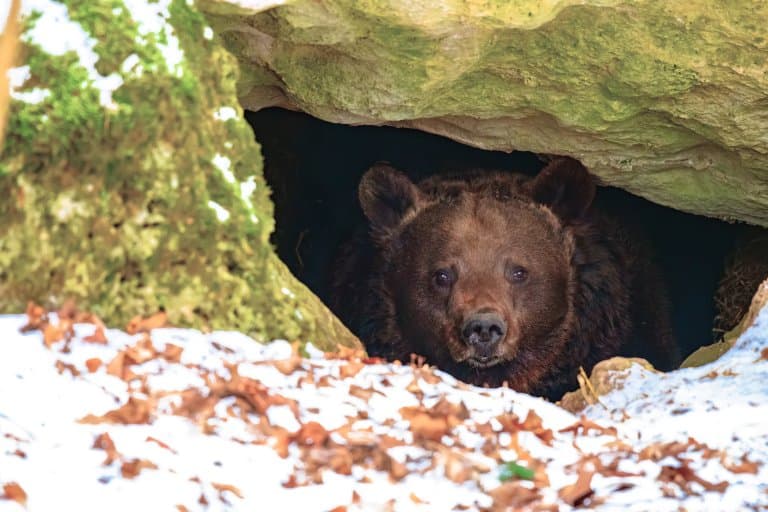
Studies are still trying to figure out what triggers the start and end of brown bear hibernation, but it’s looking like changes in the environment kick it off.
Sometime towards the end of the hibernating season, the bear’s heart rate rises and its body slowly starts to warm back up, but within this period they may occasionally awaken to take a dump in the woods.
Still, with this strategy the bear can go months without eating, relying on its fat stores, gathered in the Autumn berry season. 1
9. Squirrel
Squirrels are an interesting example because not all of them do hibernate. Tree squirrels don’t go all Winter long without emerging, but will spend most of the day in periods of reduced activity, coming out briefly to try and remember where they left their nuts.
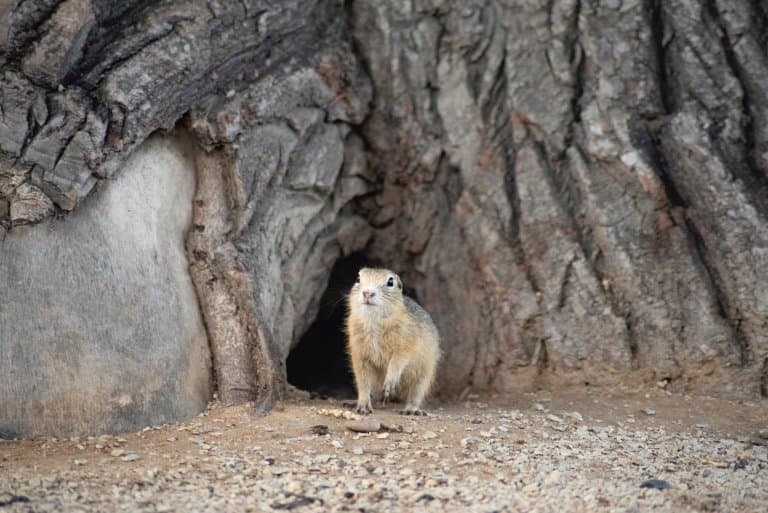
During this period, they may sleep in a state of reduced metabolism, but only for some hours.
Ground squirrels, on the other hand, might hibernate for as long as 8 months if the weather really sucks! Their stockier build allows them to store more fat and ride out the harshest months in a deep slumber.
8. Snake
It’s not just mammals who are capable of strategically slowing their bodies down; reptiles have been doing it for even longer!
In reptiles, this is classically called Brumation, though it’s characterised by the same physiological changes are hibernation in mammals.
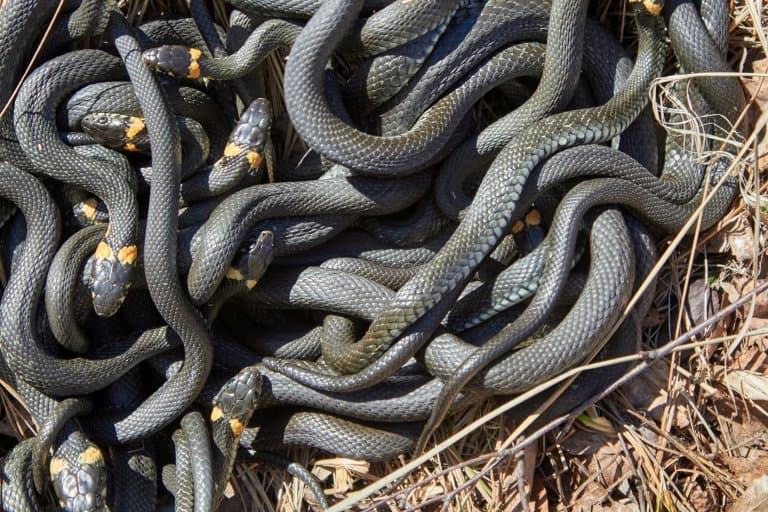
Snakes are known to find underground chambers to secrete themselves in for this period, which are referred to as Hibernacula. Many of these will contain hundreds or more snakes and might be situated under abandoned ant mounds or human-made structures like railway banks.
Snakes will follow each other’s scents to find a safe place to cuddle up and sleep together, emerging once the worst of the weather has passed. 2
7. Dormice
The Dormouse is so good at hibernating it’s named for it. The French word “dormir”, meaning “to sleep”, is where this little rodent gets its moniker, and this is one of the few animals to hibernate by the classic definition, all Winter long.

This is a vulnerable time for the mouse, whose deep state of hibernation makes it entirely defenceless, and it will come down from the trees to build a nest on the ground.
This has proved to be fatal for many dormice in the UK, as woodland management and habitat destruction destroy nests and reduce viable hibernating habitats. 3
6. Freckled Nightjar
This animal has been dubbed “Africa’s coolest bird” due to the way it uses a short-term hibernation, or torpor, to save energy throughout the night.
Instead of simply sleeping, the entire animal’s body becomes hypothermic, greatly conserving energy during its sleeping cycle.

This isn’t the only bird to use daily torpor, and different patterns of its use occur in different bird species from small to large across the world, but there is only one bird known to truly hibernate, in a similar way to mammals. 4
5. The Common Poorwill
The only known hibernating bird is from North America, and this species can remain in a torpid state for several weeks.
These are altogether quite lazy birds already and don’t choose to fly for prolonged periods very often.
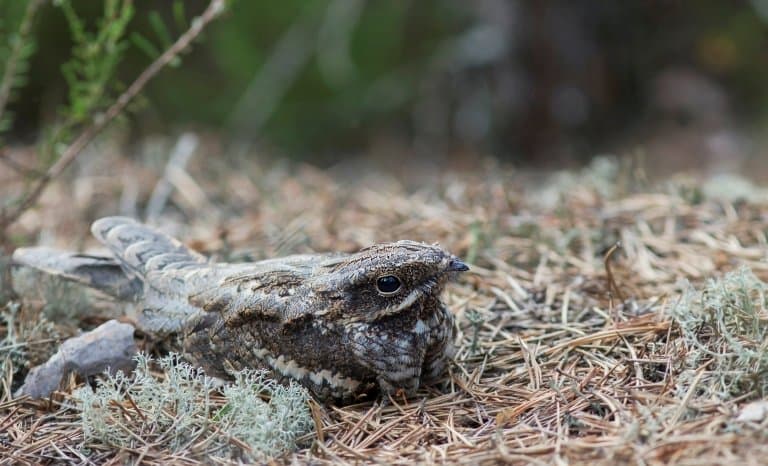
They’re more comfortable foraging on the ground, but when the weather is too cold and insects are scarce, they’ll just hibernate until it’s over.
While this has only recently been discovered by scientists, the local name for the bird suggests that native peoples were well aware of its habits, as they named it “The sleeping one”. 5
4. Frog
Amphibians are some of the most overlooked vertebrates in the kingdom, likely because people don’t like slimy things, but this is a shame because they have so much going for them.
Frogs are often indicator species for the health of their ecosystems, as their sensitivity to pollutants makes them the first to be affected by toxins entering their habitat.
They’re also found all over the world, from deserts to Arctic tundra, and have many unique adaptations, including hibernation.
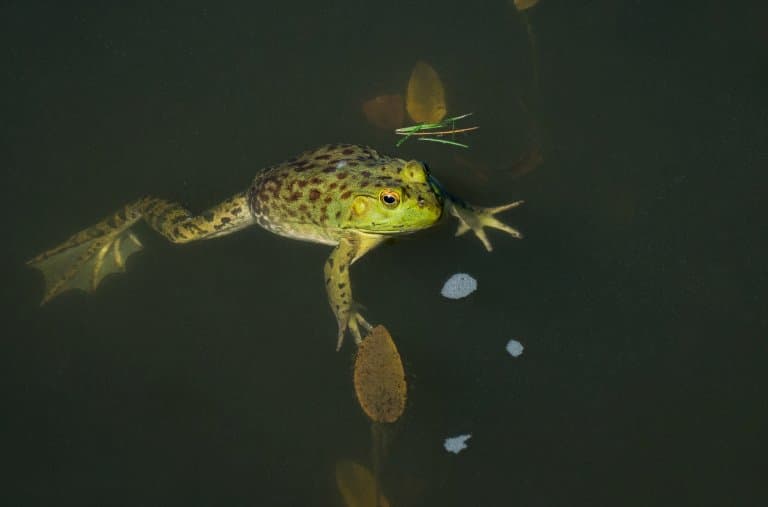
Like snakes, some frogs will seek out a hibernaculum, inside which they can reduce their body temperature safely and ride out the cold weather. Some frogs like the American bullfrog even hibernate underwater, able to reduce their metabolic needs to the point of supplying sufficient oxygen from the water through their skin!
During this time their bodies concentrate glucose in their tissues, decreasing the freezing temperature of their blood and acting as an anti-freeze. 6
3. Snail
Hibernation isn’t even exclusive to vertebrates, and you may have stumbled across many a slumbering gastropod in the garden without even knowing it.
Snails can go into a rest phase and are often seen with a plugged shell hole, covered in a solidified mucous layer to keep their bodies moist.
If weather conditions aren’t right, they may be able to stay in this dormancy for weeks at a time, up to six months, without needing to eat or drink. Recently, it was recognised that snails also sleep, like most other animals, and are less healthy and alert if kept awake for long periods!
2. Fat-tailed Dwarf Lemur
From snails to primates, the closest living, hibernating relative to humans is the lemur, who can ride out hard times inside tree holes for up to seven months.
During this hibernation, their body temperature will conform closely to the ambient temperatures, suggesting that thermoregulating mechanisms have been switched off.
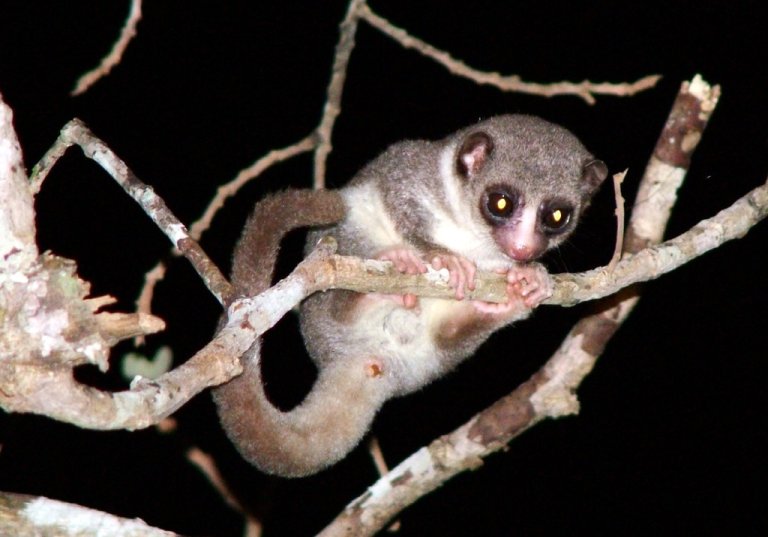
Many lemurs hibernate, but the Western Fat-tailed dwarf lemur prefers tree holes over ground-based hibernacula. Its close cousin, on the other hand, The Eastern dwarf lemur, digs. 7
1. Marbled Lungfish
The list wouldn’t be complete without a fish, and one of our closest fishy relatives shares the same preference for breathing air that we do, at least for part of the year.
When these states of reduced activity are used to avoid hot weather, they’re called Aestivation, rather than hibernation, but they are essentially the same thing.
Lungfish aestivate through drought periods, during which their ponds reduce to a thick mud, and they dig in their little heels and encase themselves in mucous to stay fresh.
From here, they make use of the organ they’re named for, and take gulps of air into their lung to breathe, until the water finally returns and they can start using their gills again.
It’s thought that this form of hibernation is not triggered, like so many others, by a change in body temperature, but by a particular hormone, which, if isolated, might have similar effects on humans.
Remarkably, lungfish can stay in this state for more than two years! 8
Final Thoughts
Hibernation is still an incomplete puzzle to researchers, and the implications of figuring it out could be huge. From long-distance space travel to medical advancements to just getting a jolly good sleep, cracking the code for human torpor states could come in very handy.
But for the animals who have perfected it, climate change is causing concern. Climate change may reduce animals’ abilities to store enough resources to survive a season of hibernation and could remove the need to altogether, causing unknown effects on the ecosystem from having all the extra bears wandering around.
It might also be bringing animals out of hibernation too early, emerging before their food sources are ready. The truth is, climate change is having enormous impacts on all ecosystems but it remains to be seen how hibernating animals will adjust to a warmer world.
Fact Sources & References
- L. Evans, N. J. Singh, A. Friebe, J. M. Arnemo, T. G. Laske, O. Fröbert, J. E. Swenson, and S. Blanc (2016), “Drivers of hibernation in the brown bear“, National Library of Medicine.
- ofia Quaglia (2023), “Why and Where Snakes Hibernate“, Discover Magazine.
- “Where do dormice hibernate?“, PTES.
- A.E. McKechnie; R.M. Brigham; R.A.M. Ashdown; M.B. Christian (2007), “Africa’s coolest bird: Winter torpor in the freckled nightjar (Caprimulgus tristigm)“, Sci Hub.
- “Common Poorwill“, Audubon.org.
- “How do frogs survive winter? Why don’t they freeze to death?“, Scientific American.
- Marina B. Blanco, Kathrin H. Dausmann, Jean F. Ranaivoarisoa & Anne D. Yoder (2013), “Underground hibernation in a primate“, Nature.com.
- Chrissy Sexton (2023), “Our warming climate is changing how animals hibernate“, Earth.com.
